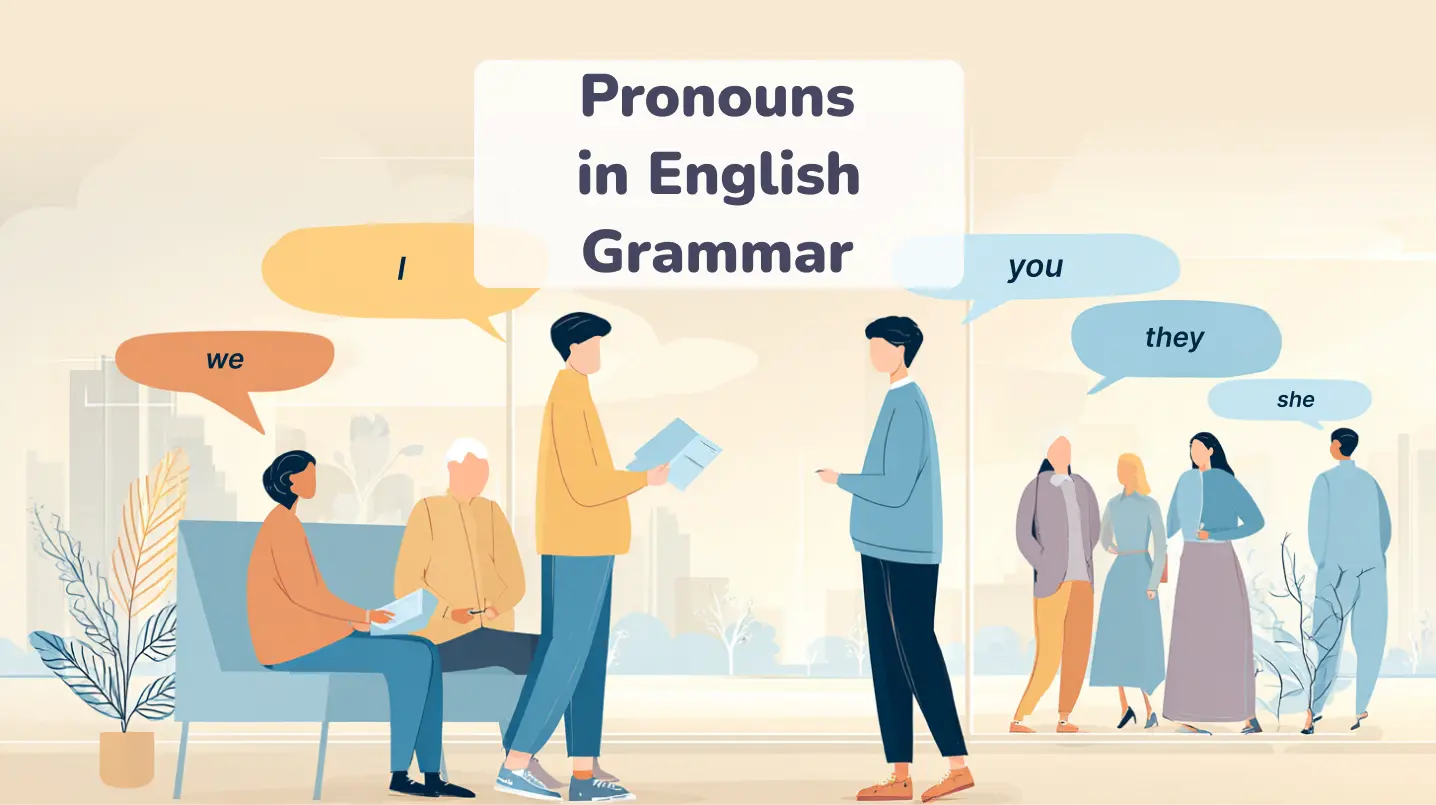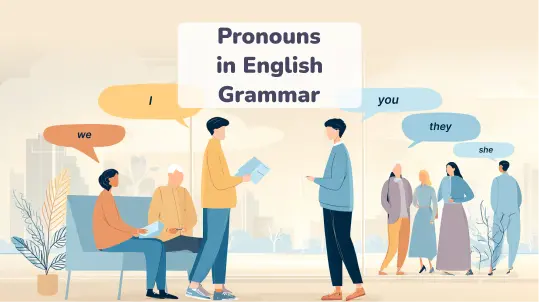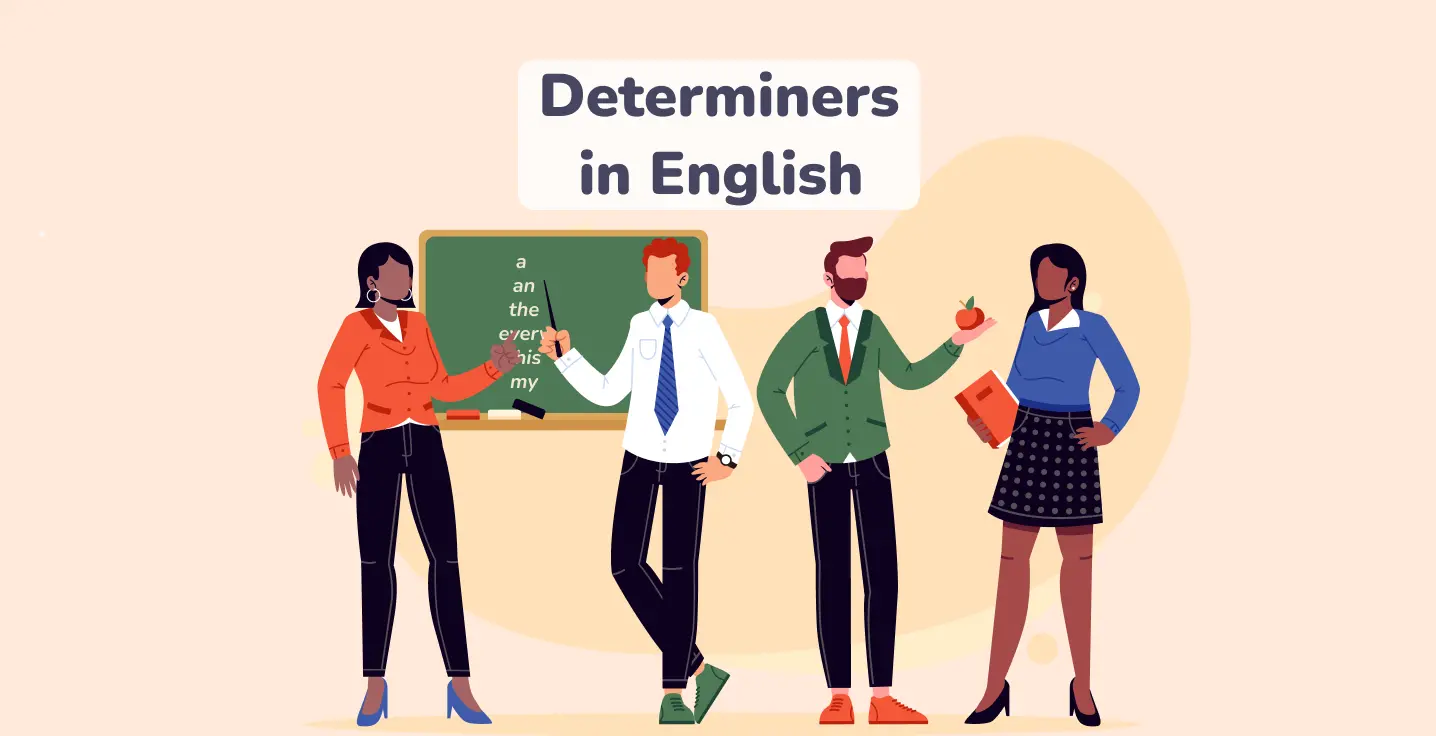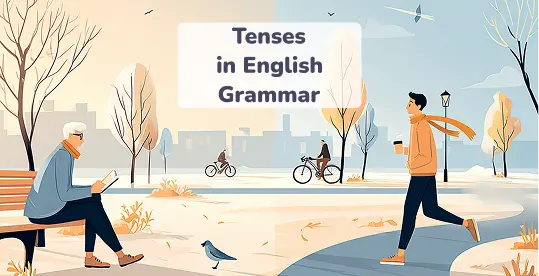What is a pronoun?
Pronouns are words speakers use to replace nouns: names, things, places, buildings, and more. They make your sentences sound clearer, and here, you can see how it works in practice:
We repeat the girl’s name from sentence to sentence, and it is boring. Here’s how we turn it into a more interesting one:
It sounds so much better now! Instead of “Helen,” we use she, a small word that makes your text easy to read and understand.
Level up your English with Koto!
Types of Pronouns in English
Learning pronouns of various kinds will help you sound more natural. You will review the table with every category and real-life examples of pronouns to make your study easier.
Main pronoun categories with examples
Let’s introduce the basic types with clear explanations from our experts.
| Type | Examples | Used to |
|---|---|---|
| Personal pronouns | I, you, he, she, it, we, they (subject); me, him, her, us, them (object) | Replace names. |
| First-person pronouns | I, me, my, mine, myself; we, us, our, ours, ourselves | Talk about you as a person, you and other people (plural). |
| Second-person pronouns | You, your, yours, yourself, yourselves | Talk to someone. |
| Third-person pronouns | He, him, his, himself; she, her, hers, herself; it, its, itself; they, them, their, theirs, themselves | Highlight when you talk about someone or something. |
| Subject | I, you, he, she, it, we, they | Give information about who or what is doing something. |
| Object | Me, him, her, us, them | Describe who or what is under an action. |
| Possessive pronouns | Mine, yours, theirs | Show belongings. |
| Possessive adjectives | My, your, his, their | Show that someone or something belongs to or is in some relationship with you. |
| Reflexive | Myself, yourself, themselves | Tell about an action that is turned to a person. |
| Demonstrative | This, that, these, those | Point at things or people. |
| Interrogative | Who, what, which, whose | Make questions. |
| Gender (gendered or gender-neutral) | He, she, they, ze, xe, hir | Show if it is a man, a woman, or a neutral person. |
| Relative | That, which, who | Show relations. |
| Indefinite | Somebody, nobody, each | Name people and things in general (without concrete). |
Detailed look at each group
For now, as you are ready to learn more about the real-world examples, we will break down the usage of the most frequently used:
Personal pronouns
Used to refer to some specific nouns naming people or staff, depending on the subject and object, as well as the singular or plural number. Here is a list of pronouns with samples:
| Type | Example |
|---|---|
| I |
|
| You |
|
| He |
|
| She |
|
| It |
|
| We |
|
| They |
|
| Me |
Help
|
| Him |
My friend saw
|
| Her |
I like
|
| Us |
Sarah must tell
|
| Them |
Mom helped
|
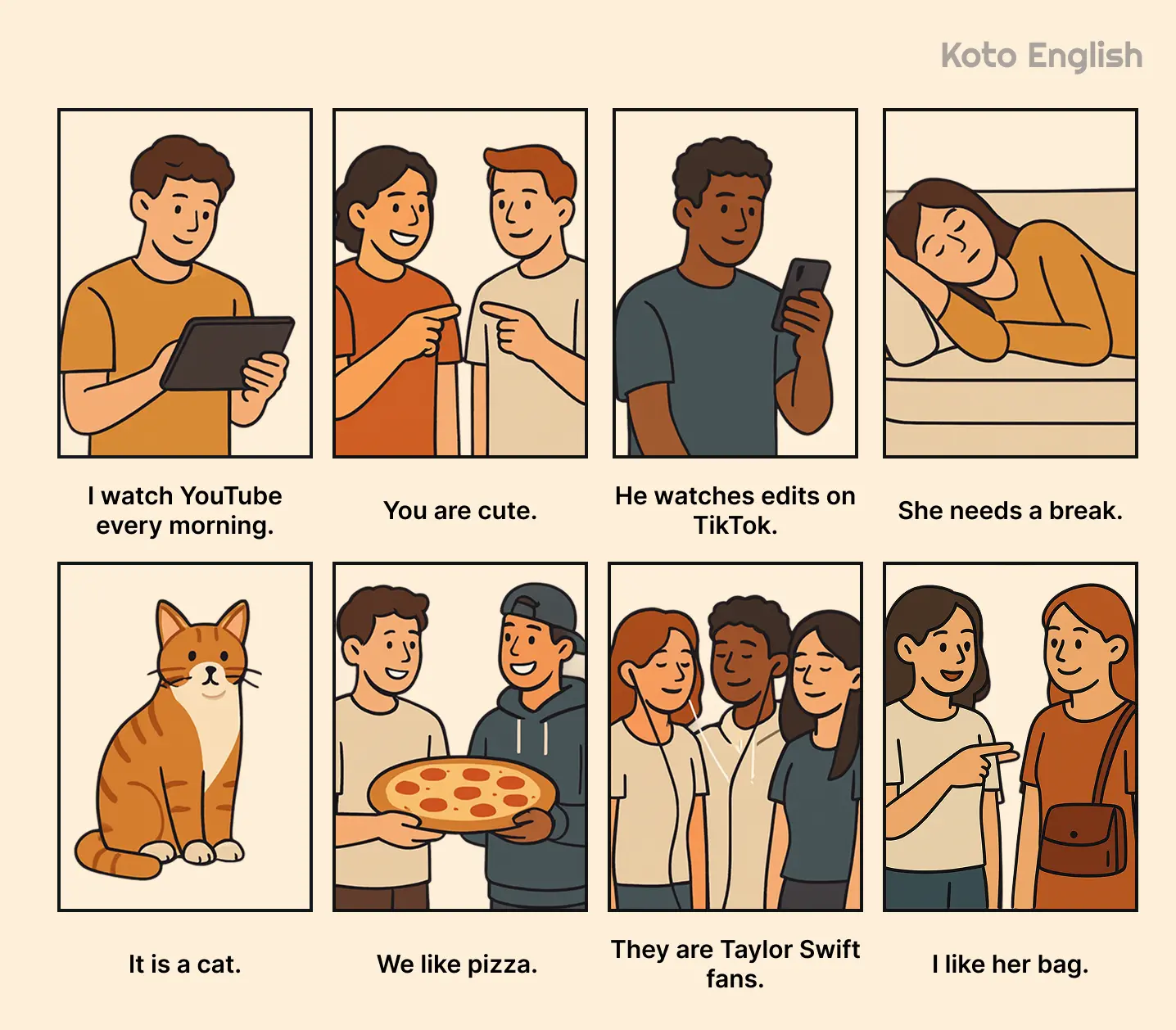
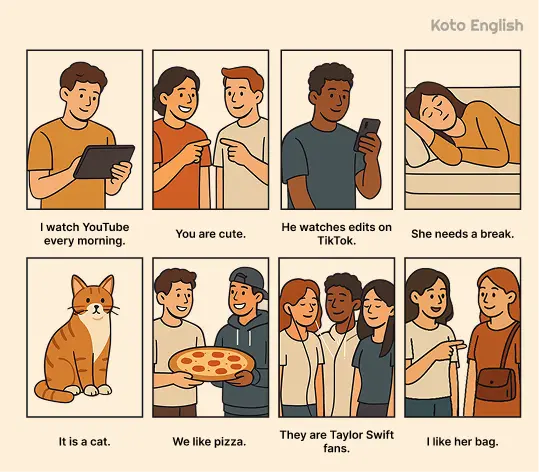
Possessive pronouns
You use this type of English pronouns when talking about something that you or other people own, and it can be helpful in various situations where you need to explain some details about belonging (objects and people).
| Type | Example |
|---|---|
| Mine |
“The boy is
|
| Yours |
Is this bag
|
| His |
”The Hunger Game” book is
|
| Hers |
The phone is
|
| Its |
You stepped on
|
| Ours |
This house will be
|
| Their |
It is
|
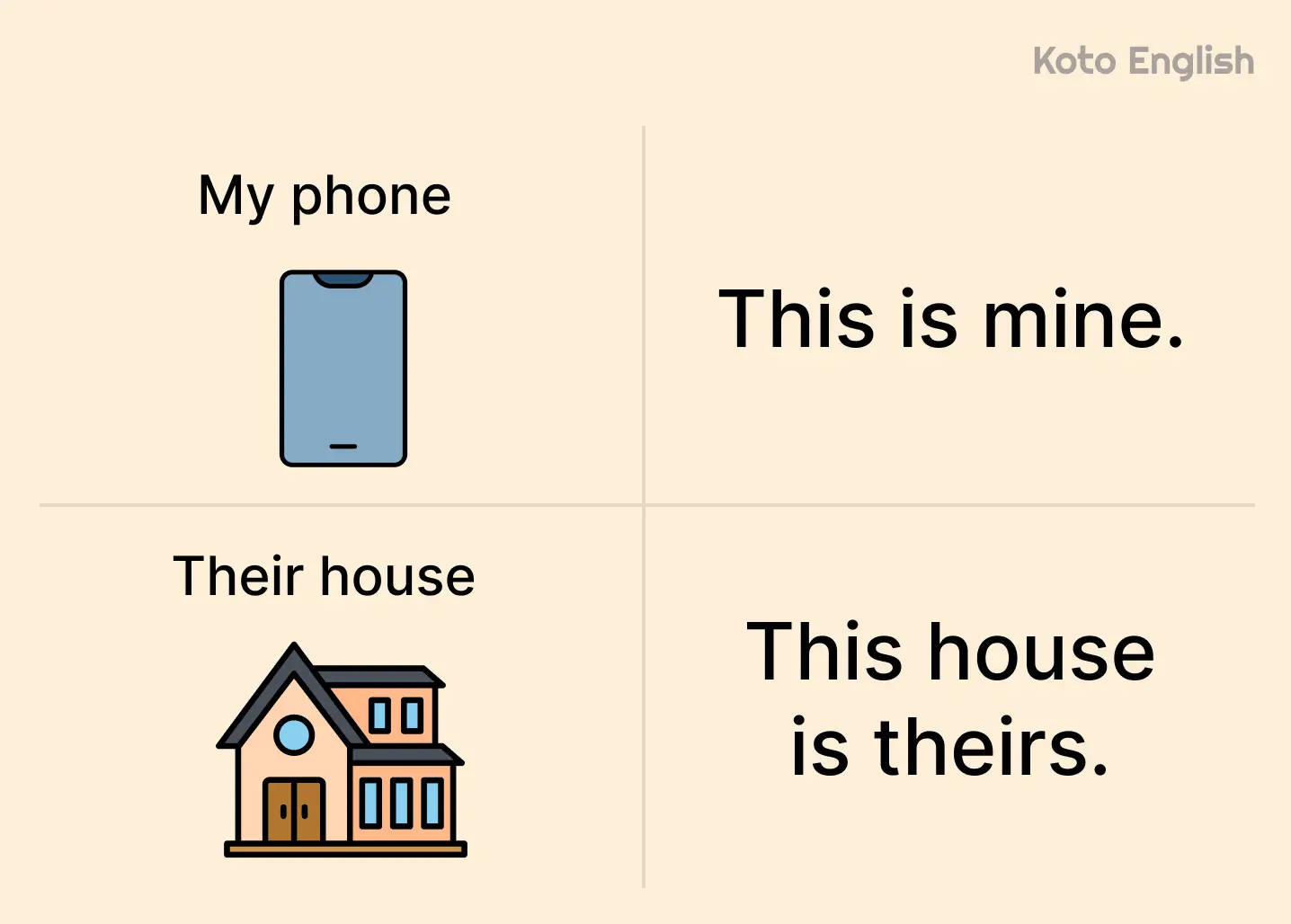
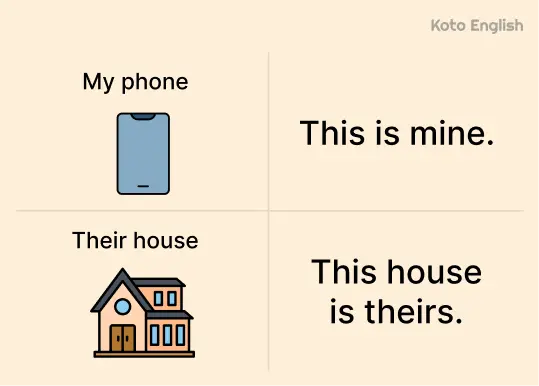
Demonstrative pronouns
They are used to indicate whether something is located near or far, as well as to point to something specific. Here are the pronoun examples:
| Type | Example |
|---|---|
| This |
Wow,
|
| That |
It is a wonderful video, look at
|
| These |
|
| Those |
|
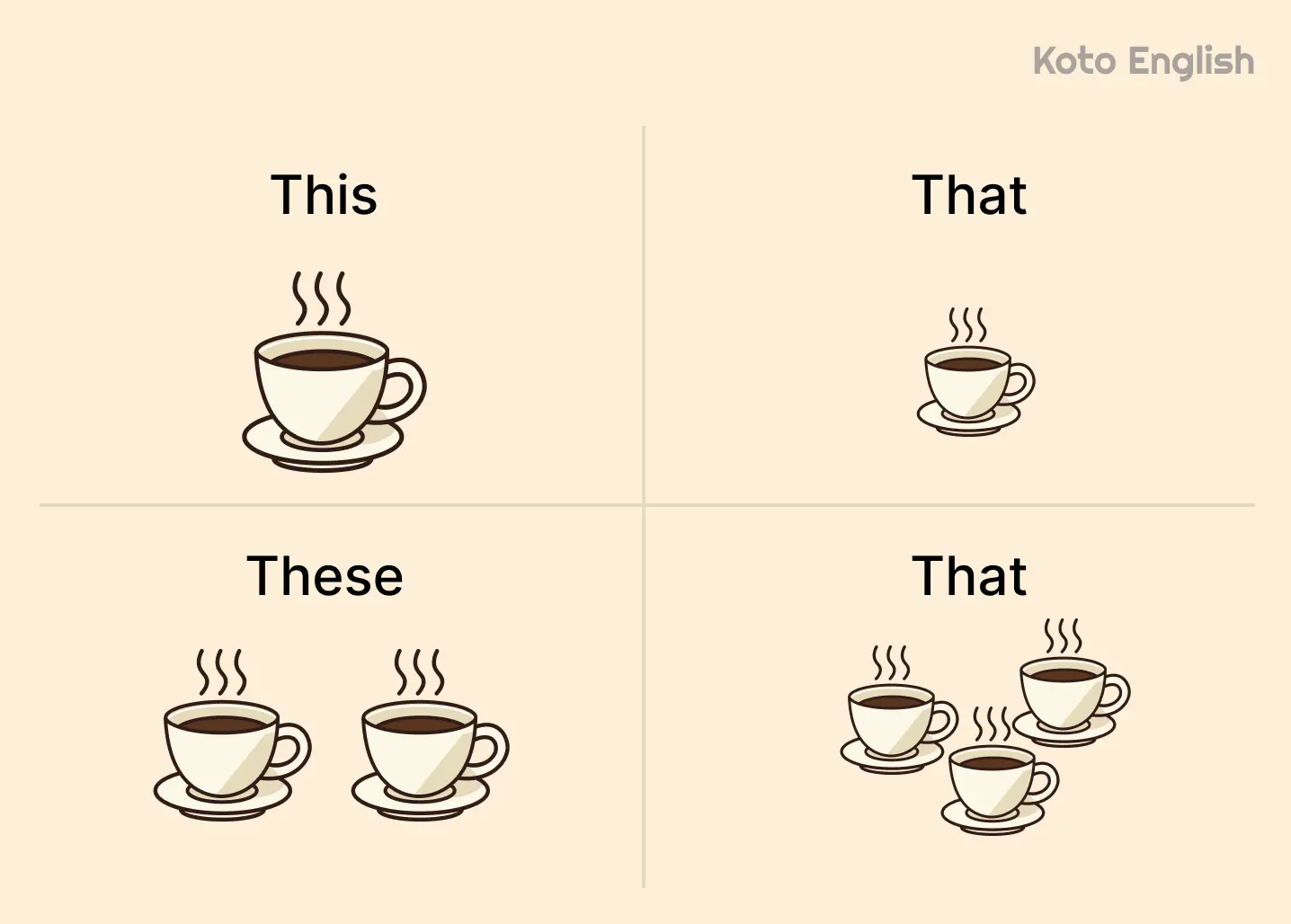
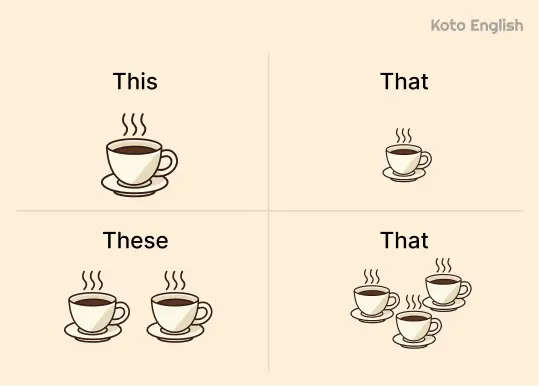
Interrogative pronouns
You meet them when forming and hearing questions, and you will learn the list of pronouns in English used in daily communication. Typically, they refer to persons, subjects, objects, things, choices, ideas, and more.
| Type | Example |
|---|---|
| Who |
|
| Whom |
To
|
| Whose |
|
| What |
|
| Which |
|
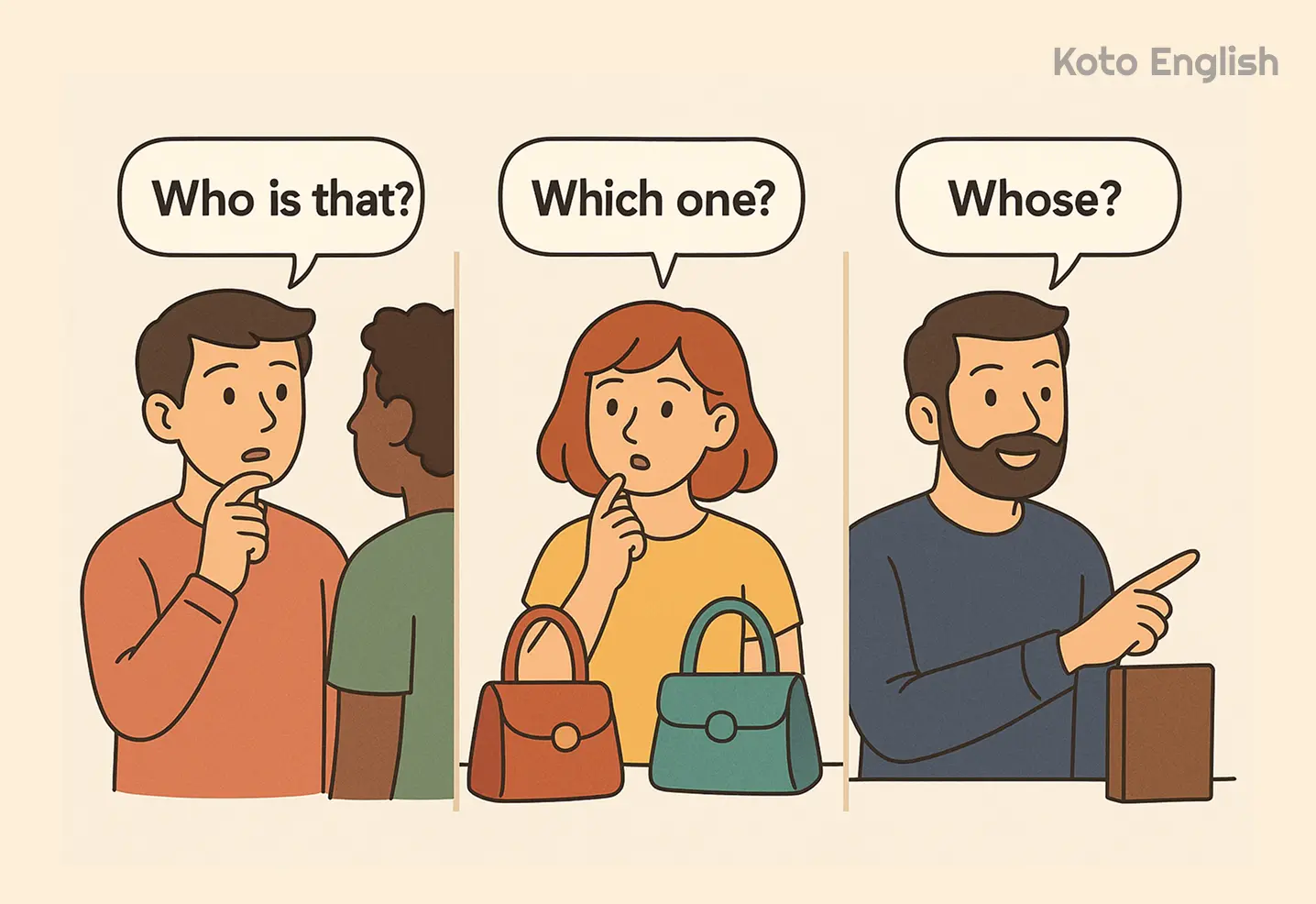
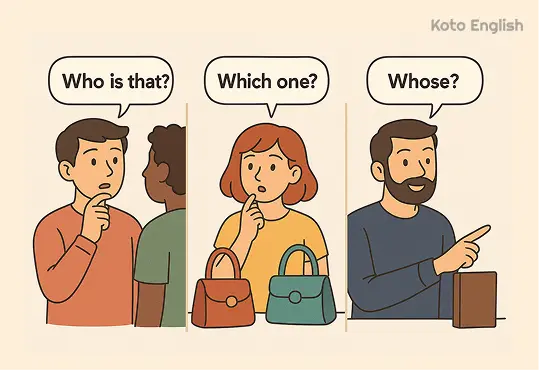
Relative pronouns
From the table, you can see that there are also who, whose, and so on, and you may ask, “Well, but we have just learnt this kind?”. No worries, here is a simple explanation as this type of pronoun is used for the connection between a phrase and a noun/pronoun. Here are more details:
| Type | Example |
|---|---|
| Who |
The girl
|
| Whose |
He is the one
|
| That |
The teacher’s TV
|
this type is typically used in formal English and can be skipped in daily conversations.
Reflexive pronouns
The usage comes from the naming, as these pronouns in English are common for situations where the action relates back to the subject.
| Type | Example |
|---|---|
| Myself |
I love
|
| Yourself |
You should praise
|
| Himself |
He brought
|
| Herself |
She taught
|
| Itself |
My cat made this mess
|
| Ourselves |
We dress cute for
|
| Yourselves |
I hope you enjoy
|
| Themselves |
They took a photo of
|
You have come through the most common types and their examples that can be used in real life, so for now, it is important to reveal the correct ways to incorporate them in your knowledge toolkit. Let’s focus on this theme.
How to use an English Pronoun correctly?
The pronouns’ meaning is clear, while use cases may be a little complicated for new learners. To help you make your speech and writing easier and more fluent, our experts created this material that will help you focus on core concepts and learn the correct way to use pronouns.
Subject pronouns, which are typically used before verbs, refer to the person who does an action (long-term or short-term):
The core moments here stay for the need to pay attention to who you are talking about, as he indicates a man/boy and she refers to women/girls, and it can be used for animals, organizations, etc.
The object type in our pronouns list has the opposite usage, as you are indicating someone who receives an action described. You put them after verbs and prepositions (to, for, at, etc.):
Possessive adjectives and pronouns are the trickiest ones here. So, they both are used to show ownership, but adjectives come before a noun in a sentence, and pronouns take place alone. Let’s take a look at examples:
adjectives are more strongly related to owning something, adding a powerful idea that this or that thing belongs to other people.
The reflexive kind is put in sentences when you are talking about a person who is the object and subject at the same time. Here is an explanation:
The same as with the previous type, it adds more context and emphasis, which is so crucial when shaping communication.
Demonstrative is also a part of defining pronouns that point to something and tell about near, far things and people, explaining more details. Here’s how it works:
Interrogative ones are the bread and butter of questions and some statements, with 5W pronouns and some additional ones, depending on the context. Let’s review the usage:
Indefinite ones are used to tell about non-specific people and things or both, still do not name something or someone particular. Here are some examples for more understanding:
Now, you know the meaning of pronouns and how to use them properly to get rid of misunderstandings while focusing on the conversation and paying attention to your speaking partner.
Top mistakes learners make
You already know the power of pronouns and their confusions, so for now, it is time to learn what mistakes are usually made, how to fix them, and what the top tips for avoiding them in the future.
Mistake 1. Misplacing subject and object types.
Sometimes, students write and say I instead of me when the pronouns have to come after some actions. Here, you need to remember that verbs require object pronouns.
|
He calls I every morning.
|
He calls me every morning.
|
|
They fed we with delicious soup.
|
They fed us with delicious soup.
|
|
We saw they in that new park!
|
We saw them in that new park!
|
Mistake 2. Confusing possessive adjectives and pronouns.
The point here is that adjectives are used before a noun, while the second one is used to replace such a noun.
|
I told you this is mine pen!
|
I told you this pen is mine!
|
|
That water bottle in the locker is her.
|
That water bottle in the locker is hers.
|
|
This is yours ticket to the concert.
|
This ticket to the concert is yours.
|
Mistake 3. Writing its with an apostrophe.
This is more like a doodled error which even the natives make from time to time, so you just need to be more careful, as it’s is a short form of it is, and its is a subject pronoun.
|
My cat licks it’s paws every morning.
|
My cat licks its paws every morning.
|
|
This organization forgot it’s core mission.
|
This organization forgot its core mission.
|
|
I like this cafe, but it’s doors are closed forever.
|
I like this cafe, but its doors are closed forever.
|
Mistake 4. Ignoring unwritten rules.
Some pronouns in English grammar may sound unnatural and impolite, so it is essential to follow style recommendations across the technically incorrect but more pleasurable variants. Here is an example:
|
I and Steve listened to this song on vinyl.
|
Steve and I listened to this song on vinyl.
|
|
I and Julie are colleagues and not friends.
|
Julie and I are colleagues and not friends.
|
Test Your Knowledge
As you have learned the basics of an English grammar pronoun, it is time to check your knowledge with engaging quizzes that are commonly used by teachers and can be found in international exams.
Practice daily using these pronouns across various exercises: write your journal, talk with friends and relatives, tell someone about your beloved, what you saw, what you own, what you are dreaming about — literally any topic requires the usage of pronouns.
Tips for Mastering
With practical insights, you will be able to use all pronouns easily, without even thinking about whether you are right or wrong. Let’s review the core advice from native speakers:
Tip №1: Try replacing nouns with pronouns.
It will help you practice your understanding of texts and make learning more fun, for example, when you are reading an article or a book, and see a name. Then, you choose the pronoun that fits it. For instance, if Maria is a woman, you will use she, her, or hers.
Tip №2: Use a formula for subject and object pronouns.
To put it simply, it sounds like:
- If the pronoun conducts some actions ➡ subject type
- If the pronoun is under an action ➡ object type
Tip №3: Use “they/them” if you have doubts about the subject.
We noted that the English pronoun is defined by gender; still, there is the ability to use them if you are not sure who you are talking about. It can also be used if you are indicating people in general. For example:
Tip №4: Use one and ones to avoid repetition.
They are typically used to replace plural and singular nouns in one sentence (but not with uncountable nouns!). Here, you can place it like this:
Tip №5: Agree verbs and pronouns.
You have answered the question, “What are pronouns?” So you need to learn how to combine it with verbs. Depending on the context, you will match verbs and pronouns, and some of them, like everyone and each, have only singular forms, though they sound like plural ones. Here is how it works:
Tip №6: Implement flashcards into daily learning.
You need to learn more than the pronoun definition. Our advice is to use flashcards that can be both digital and hand-written, so that you learn pronouns in sentences, revealing their real-world usage and not just trying to memorize how they are used.
Moreover, such notes can be used in the subway, in queues, downloaded to your tablet or mobile phone, e-reader, and more.
Tip №7: Watch your favorite TV shows and vlogs.
Netflix and YouTube are filled with various content for you to practice the English language, follow pronunciation, and learn how to put pronouns (even the rare ones) into sentences so that they sound natural to native speakers.
Think about your hobbies and interests, and find the related videos from your favorite vloggers or actors, genres, and so on.
Tip №8: Practice until you are confident.
Perfectness comes with practice, so you need to use all pronouns in English and keep going with mistake review, grammar rules check, and more. Luckily, the worksheet below will help you train and perfect your grammar knowledge.
You will solve the top exercises that are both useful and relevant to current themes (yet they are simple to understand). It is fun and empowering, making you more confident in tests and discussions, online chats, and even singing (if it is your goal).
You will be able to improve your writing style and become more creative if you follow the tips we listed above, adding some of your thoughts that can be helpful in learning English. Keep going, and Koto will support you with relevant material. For now, let’s focus on exercises!
Summary
Learning pronouns becomes easy when you have fun and helpful sources like our guide. You studied the main types of pronouns, how to use them, what tips to use, and even common mistakes.
Keep practicing with Koto English and become familiar with other grammar rules. Check our blog, exercise page, and application to learn in a fun and engaging way. We will meet you in our next material.
English Pronouns FAQ
Simply, you need to pay attention to the sentence. Talking about live people, you say he/she (depending on the gender), and it when talking about animals and things. You also define plural or singular form and decide on a term: you (plural), they, their, and so on.
The best way to remember it is to learn the pronouns rules written above and practice. It also depends on the feminine, masculine, and neutral nouns, so you know that:
- she → her
- he → his
- they → their
The most common pronoun words in English are:
- personal: I, you, he, she, it
- possessive: mine, yours, ours, hers, theirs
- reflexive: myself, yourself, themselves
- demonstrative: this, that, these, those
- interrogative: who, whose, whom, what, which
Typically, people use them daily, talking about various topics from their plans to describing some events and sharing plans.
Simply, it is crucial because it delivers more clarity to what is said, shows relationships and ownership, and improves the natural flow of writing and speaking. Therefore, you will be able to speak politely, making your sentences more understandable for other speakers.
It is easy to differentiate them: you need to use who when talking about a subject (who is doing something), and whose for an object, the one who is under the action. Here is how it works:



